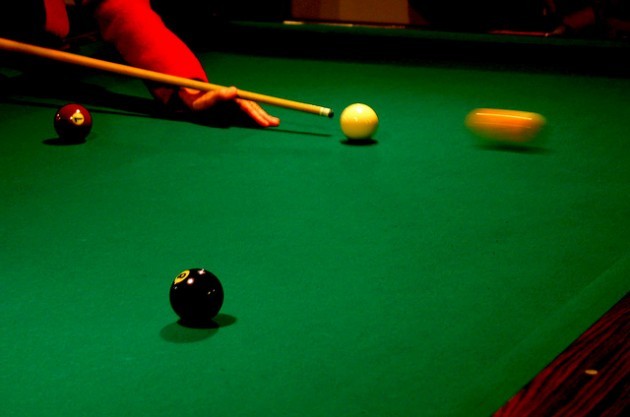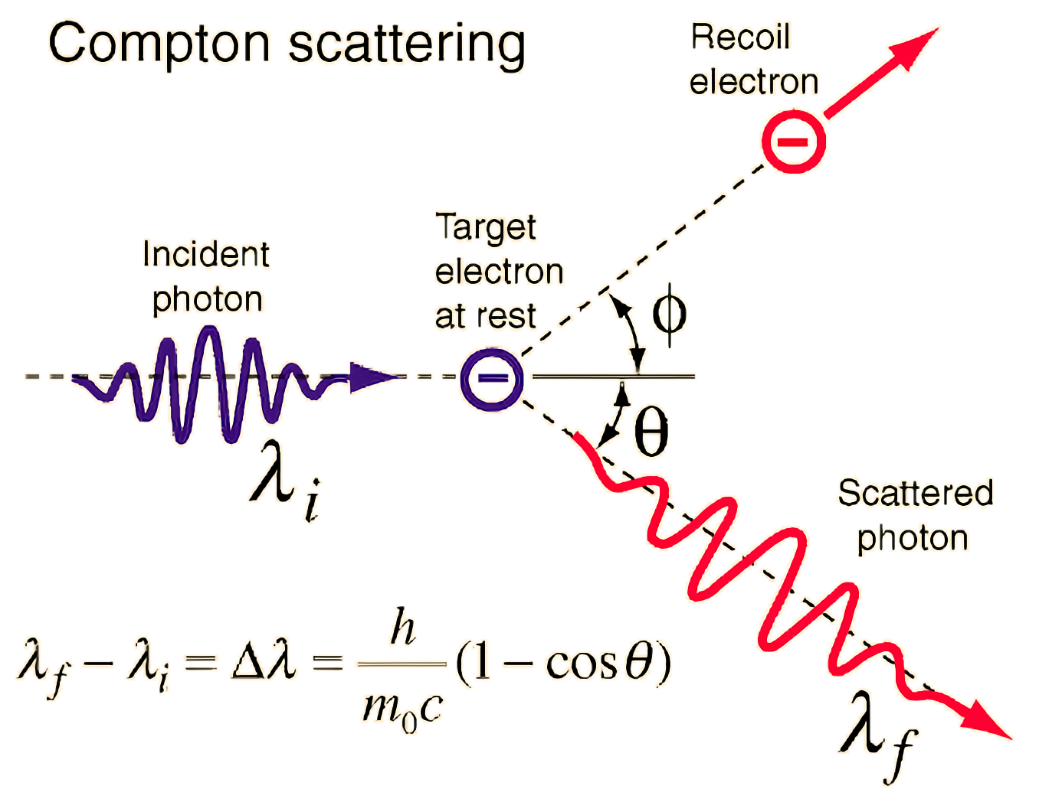In this article, we are going to discuss various elastic collision examples and detailed facts on each.
The following is a list of elastic collision examples:-
Newton’s cradle
It consists of bobs of equal masses hanging on the cradle with the support of a string of equal length. When the momentum is applied to the bob at one end, bob 1 moves with velocity V1 having the momentum of mu1 and gaining kinetic energy (1/2)m1u12

On colliding the bob 1 to bob 2 this kinetic energy is supplied to the bob 2 in the form of potential energy, as bob 2 to 4 are in close vicinity to each other, hence the momentum is conserved and the potential energy is transferred to the subsequent bobs and eventually releasing to the last bob in a line, which then swings in the air by converting the potential energy received into the kinetic energy equal to the given kinetic energy to the bob 1.
Let us formulate how momentum and energy are conserved in the case of Newton’s cradle.
As per the conservational law of momentum, the equation is written as

Since, m1=m2=m3=m4=m5=m and the velocities of the bobs 2,3 and 4 remains unchanged in the collisions, that is equal to zero. And initial velocity of the bob 5 is zero and after collision the velocity of the bob 1 becomes zero.
Therefore,
mu1=mv5
The velocity of the bob 1 and 5 remains the same, and hence,
u1=v5=v
therefore mv=mv
The momentum before and after the collision is equal.
The same way the kinetic energy of bob 1 and 5 remains the same as the velocities of both the bob is constant. We need not consider the kinetic energies of bob 2-4 as there is no velocity of the bobs seen.
Ball bouncing back on the ground

The ball bouncing on the ground is an example of the elastic collision too. The ball retains its momentum while returning down to the ground and hence bounce back until its energy is reduced.
Collision of billiard balls

When you hit a billiard ball to target another ball, you apply a force on the ball, it moves with the kinetic energy and transfers this energy to the next ball on colliding. Since there is a transfer of the kinetic energy from one ball to the next and the momentum is conserved, we can say that this is an elastic collision.
Carrom
For hitting a carrommen by a striker, you are actually giving momentum to the striker supplying the kinetic energy to the striker to hit the carrommen. On striking the energy is transferred to the carrommen making its way to the net hole of the carom board.
Tennis

The kinetic energy is supplied to the ball by hitting it with a tennis racket. The ball collides with the net of the racket which in addition provides elastic potential energy to the ball which is converted into kinetic energy. The opponent hits the ball maintaining the energy of the ball and the process continues until the ball drops its momentum. This is also an example of collision as the momentum and the kinetic energy of the ball are conserved after every collision.
Cricket
A batman hitting the ball is also an example of an elastic collision. The ball approaching the batman from the bowler has kinetic energy and momentum, which is maintained after hitting a ball with a bat and carries away the ball with momentum and the kinetic energy until drops down.
Compton Scattering
Compton scattering is also an example of elastic collision in which both momentum and energy of the particles are conserved.

Image credit: Blogspot
It is a collision between a photon and a charged particle. A photon with high kinetic energy strikes the electron at rest making an angle of 180 degrees. The energy of the photon can be calculated by
Ephoton=hc/λ
The kinetic energy of the photon is transferred to the stable charged particle, this energy is recoiled by the electron and then scattered making an angle φ with the plane. The photon is scattered away making an angle θ releasing or gaining the energy by the electron. If the energy of the photon decreases it implies that its wavelength is increased.
The difference in the wavelength of the photon before and after colliding is given by the equation:-

Trampoline
A person jumping on a trampoline exerts elastic potential energy that helps him to jump higher converting the elastic potential energy into kinetic energy. After every jump attaining a certain height, a person makes a pause in the air when the total kinetic energy of the body is converted into potential energy, and a person comes vertically down due to the gravitational force.
When a person jumps on the trampoline, the energy of the person on the trampoline and the elastic potential energy of the trampoline is conserved even after the frequent jumps. Hence it is a type of elastic collision.
A car hitting a bike in motion
If a car at very high speed hits a bike in motion, then the bike will accelerate with an increase in velocity, and be carried away to a distance before collapsing, at the same time the car experiences a back jerk.
This is because the kinetic energy of the car accelerating at very high speed transfers its energy to the bike that resulting in a carried away of the bike increasing its velocity. Here we can see that the energy is conserved.
Molecular collision in the air
In the air, molecules move in a random motion as the molecules in the air are separated by a large distance between them and hence are free to move. There are more probabilities of molecules colliding with each other.
The momentum and energy of the molecules are conserved hence showing elastic collisions.
Plucking a mango from a tree using a slingshot
A slingshot comes with a rubber belt which when stretched produced enough potential energy and is supplied to the stone holding across it. This stone applies force on the targeted mango and changes its direction and falls back to the ground due to gravity. Here, kinetic energy is conserved.
Two boats tied to the mooring buoy
The boat floats due to buoyant force by the volume of river water. As the river water is turbid the boats tied to the mooring buoy will shake along with the small waves upwelling on the water surface. The potential energy of the huge water bodies is very high.
As a result of turbidity and unstable boats, there are more chances of two boats colliding with each other. On collision the boats of equal weight repel away from each other maintaining equal momentum and energy is transferred equally to both the boats. Hence is an example of elastic collision.
Rubber band
When the rubber band is stretched, it stores potential energy with it; which when released, gives out an immense amount of energy. The rubber band is an elastic item that regains its shape and size even after stretching. The energy is conserved in a process and hence is an example of an elastic collision.
Skipping stone in water
When a stone is targeted over the water body, a stone bounces on the upper level of water because of the conversion of its energy from kinetic to potential and from potential to kinetic energy depending on the spin and force applied onto a stone by the person. The momentum of the stone is conserved in the process making it possible to skip the long-distance and bounce on the surface of the water.
Two river tributaries joins to form a single water way
Two rivers flowing with two different velocities combine and direct the water in a single direction. As the volume of the water in the river after joining into single tributaries doubles, the speed of the flowing water slightly lowers but the momentum of the flowing water is conserved.
What is Collision
The striking of two or more particles against each other in space transferring their energies and momentum to one other is known as a collision.
When the object is in a stable state of rest, it has enough potential energy associated with it, which is converted into kinetic energy during its motion. As the object is in motion, there are probabilities of bombarding with another object in the surrounding.
On collision the object transfers its energy to the object it collides with, which depends upon whether the opposite object is at rest or into motion, the speed and direction of the object too; based on it the object may gain or transfer its energy.
What is Elastic Collision
After the collision of particles, if there is a transfer of momentum and energy to the particle colliding with each other, then it is known as an elastic collision. In an elastic collision, both momentum and energy are conserved.
Consider a particle of mass m1, moving with velocity V1 collides with a particle having mass m2 at rest. After the collision, the mass m2 displaced from its place with velocity V2, and mass m1 comes to rest after diverting in a different direction. The momentum of the two particles colliding with each other can be given by the formula
m1u1+m2u2=m1v1+m2v2
Where m1, m2 are masses of particle 1 & 2 respectively
u1, u2 are initial velocities of both the particle before colliding, and
v1, v2 are final velocities of the particles after collision.
Since the sum of the velocities of the two particles before and after collision remains the same, it is evident that the momentum of the particles is conserved before and after the collision in the case of elastic collision.
Same way the kinetic energy of the particles is formulated as

Read more on 20+ Examples of Potential Energy: Detailed Facts
Frequently Asked Questions
A man pushing a box of mass 20kg at velocity 1m/s hits an object at rest having mass 2kg. What will be the velocity of the object of mass after collision?
Given: m1=20kg
m2=2 kg
v1=1m/s
Since this is an elastic collision, the momentum of the box and object is conserved.
m1v1=m2v2
v2=m1v1/m2
v2=(20kg*1m/s)/2kg
v2=10m/s
Hence the velocity of the object will be 10m/s after colliding with a box of mass 20 kg.
What is the difference between elastic and inelastic collision?
In an elastic collision, the kinetic energy, as well as the momentum, is conserved before and after a collision.
Unlike the elastic collision, inelastic collision does not obey the law of conservation of energy. The kinetic energy of the object before and after a collision is not the same; it converts into some other form of energy.
How can one minimize the impact after collision?
To reduce the consequences that will result after the collision, we can lower the force while colliding the two objects.
The force exerting on the colliding objects can be reduced by increasing the time duration of a path taken for a collision to occur.
Why kinetic energy is not conserved in the case of inelastic collision?
In an inelastic collision, the momentum and the energy are not conserved after collision.
The kinetic energy is converted into some other form of energy, maybe heat energy, potential energy, mechanical energy; hence, kinetic energy is not conserved in the case of inelastic collision.
Also Read:
- Perfectly elastic collision examples
- Perfectly inelastic collision examples
- Elastic vs inelastic collision
- Super elastic collision
- Inelastic collision examples
Hi, I’m Akshita Mapari. I have done M.Sc. in Physics. I have worked on projects like Numerical modeling of winds and waves during cyclone, Physics of toys and mechanized thrill machines in amusement park based on Classical Mechanics. I have pursued a course on Arduino and have accomplished some mini projects on Arduino UNO. I always like to explore new zones in the field of science. I personally believe that learning is more enthusiastic when learnt with creativity. Apart from this, I like to read, travel, strumming on guitar, identifying rocks and strata, photography and playing chess.

Hi Fellow Reader,
We're a small team at Techiescience, working hard among the big players. If you like what you see, please share our content on social media. Your support makes a big difference. Thank you!